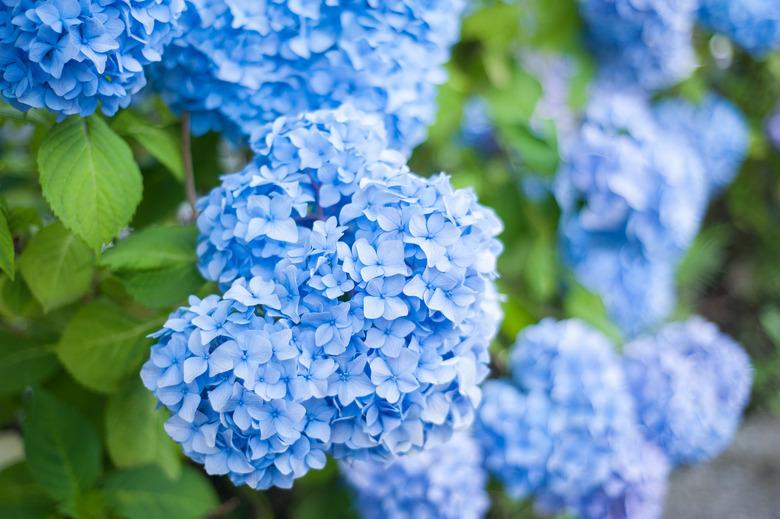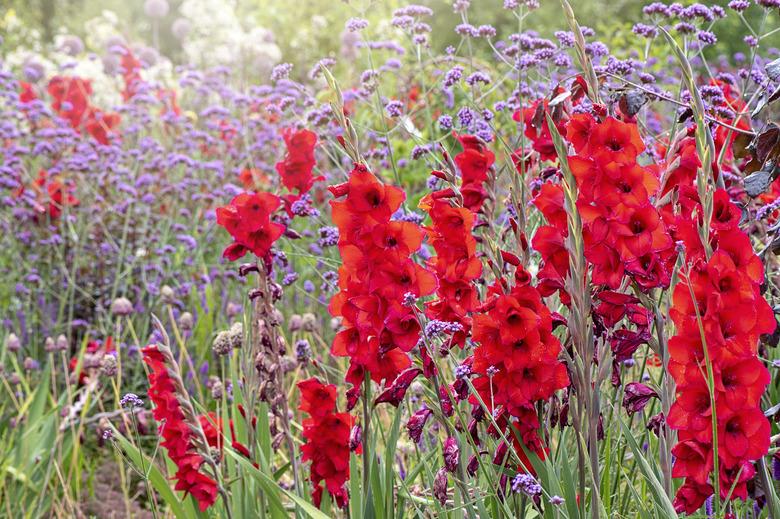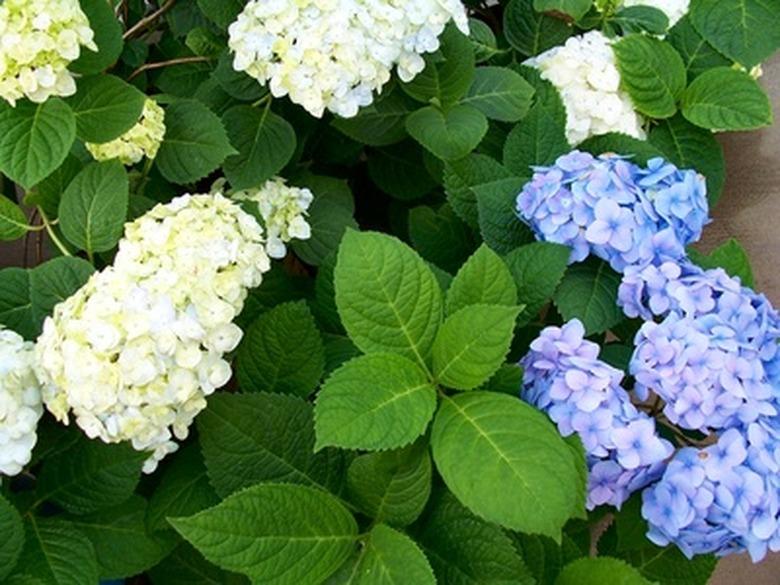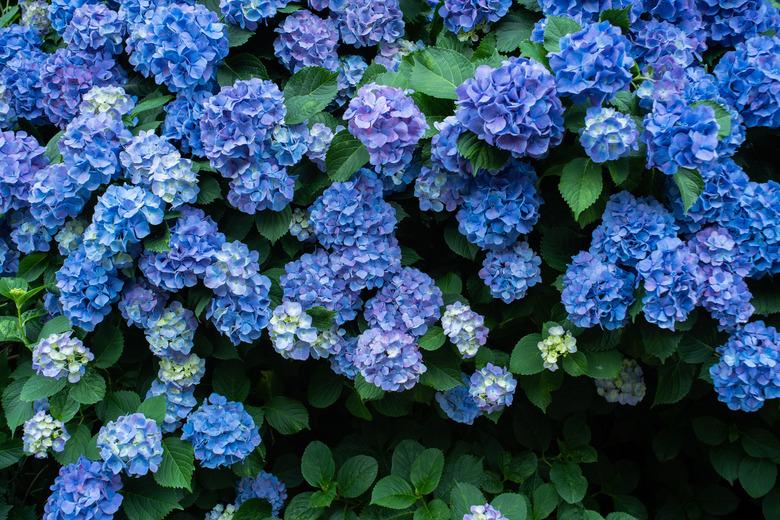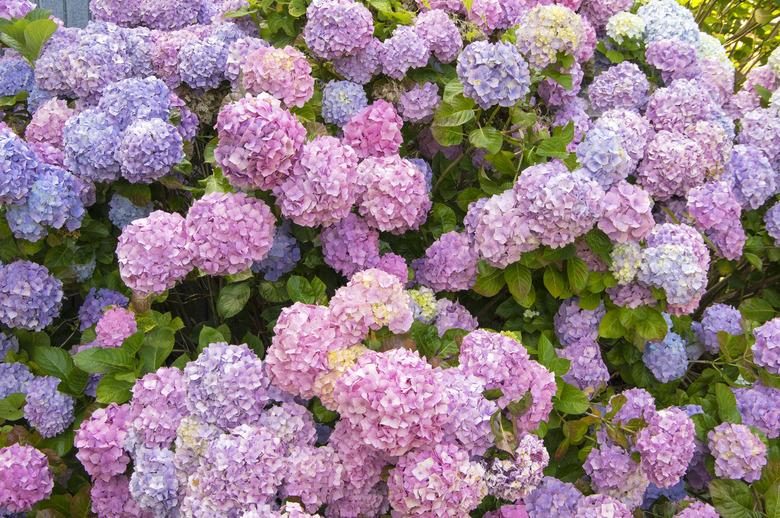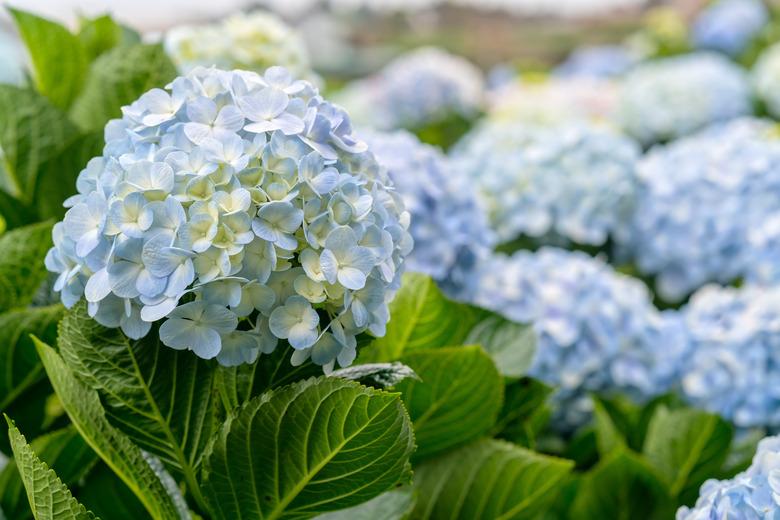How To Grow Hydrangeas
Hydrangeas (Hydrangea spp.) are perennial flowering shrubs best known for large blooms in shades of blue, purple, pink, white, green and red. The best-known species grows around 6 to 10 feet tall and produces globe-shaped flowers about 6 inches wide from summer through fall. There are also hydrangeas that grow anywhere from 2 to 15 feet tall, so there's a hydrangea that's just perfect for your garden. No matter what type you choose to grow, these plants are easy and fun to grow and are sure to leave you with ample blooms for months at a time.
Best Uses for Hydrangeas
One of the greatest things about hydrangeas is their versatility. There are climbing varieties that grow on walls and creep along as ground cover, dwarf varieties perfect for containers, treelike varieties and even bushy varieties that make excellent deciduous flowering hedges.
Hydrangea "flowers" are actually large flower clusters that are made up of a large group of star-shaped blooms. They come in a variety of sizes and shapes, most famously:
- Mophead: The most famous type of hydrangea
flower, these are large, round clusters of flowers. - Lacecap: A fascinating blend of large and small
blooms, these have centers made of small blossoms and edges adorned with larger
flowers, like those seen on mopheads. - Cone: These cone shapes are usually the size and
shape of a football.
More Like This
Hydrangea flowers are stunning both on and off the plant; in fact, they are quite popular in wedding floral arrangements. Interestingly, many hydrangeas change colors as they age, and other species have different hues depending on the soil pH.
Tip
Give careful consideration to the location of your hydrangea plants, as they require plenty of room to grow. Though many varieties do well in partial and full shade, it is best to avoid planting under trees since the competition with the roots can prevent the plants from thriving. Also, avoid growing these in windy areas, as their stems can snap easily. Finally, take care when planting in areas with pets or children because the leaves and flower buds are toxic to dogs, cats and humans.
How to Grow Hydrangeas
Starting Hydrangeas From a Young Plant
Commercial hydrangeas are not seed grown — they are most often propagated from stem cuttings and sold as rooted plants. To start them from a young plant, follow these instructions:
- Dig a hole approximately twice as wide as the nursery
container and equally deep. This should provide plenty of room for the roots to
spread. If you plan to plant more than one hydrangea at a time, space them at
least 3 feet apart but check your plant's specific recommendations; this will
vary by species and cultivar, and dwarf varieties will not need as much spacing as plants grown as hedges. - Amend the entire planting site — not just the planting hole — by incorporating organic matter, such as compost. For potted plants, use a
potting mix that contains lots of peat moss, perlite or vermiculite. - Remove the plant from its container and gently loosen the roots, taking care to free any bound or twisted roots before setting it in the hole.
The crown should be positioned slightly higher than it was in the nursery
container. - When the plant is positioned just right, backfill the hole with the excavated soil and then water thoroughly.
- Add a 2- to 3-inch layer of mulch around
the plant, taking care to keep it at least 2 inches away from the crown.
In What Zone Do Hydrangeas Grow Best?
There are hydrangeas that can grow in zone 3 all the way through zone 9, but the classic bigleaf hydrangea is best suited to zones 5 or 6 through 9. For cooler zones, look for panicle or smooth hydrangea species.
When Should You Plant Hydrangeas?
Hydrangea-planting season varies based on the species and the region in which they are grown, so the best time to plant them is generally when you see them available at your local garden center. They should usually be planted in late spring or early fall in areas with cool winters in order to avoid the threat of frost as well as peak summer heat. In warmer areas where it doesn't snow, though, they may be planted all the way from mid-fall through early spring.
Soil, Sunlight and Water Recommendations for Hydrangeas
Hydrangeas require rich, well-draining, slightly acidic soil. The plants are water lovers, and their name actually means "water vessel." Needless to say, hydrangeas are not drought-tolerant, and their soil should be kept consistently moist (but never wet). The warmer your region, the more sun they get, and the larger their leaves, the more water they will need. Maintain a 2- to 4-inch layer of mulch to help seal in moisture and stifle weed growth. Fertilize plants with a slow-release 10-10-10 fertilizer in early spring as soon as new growth appears and again in late spring.
A hydrangea's sunlight needs will vary based on the species and your region. In southern regions, most hydrangeas will only tolerate a few hours of morning sun; in northern regions, they may tolerate full sun. In areas in between, it's best to provide afternoon shade to ensure they are at least protected from harsh midday and afternoon sun. Hydrangeas that are grown in shade tend to grow larger, but many species still require at least a few hours of sunlight.
How to Propagate Hydrangeas
- In early summer, take 5- to 6-inch tip cuttings from flowerless stems.
- Strip away the bottom leaves and cut full-size leaves in half.
- Use a powdered rooting hormone according to the package instructions to stimulate
growth. - Place cuttings in a pot with sterile potting mix with at least one node under the mix and one node above it.
- Water thoroughly
before loosely covering with a clear plastic bag to increase the humidity. - Place your pot in an area with bright, indirect light but out of all direct sunlight.
- Check
the soil every few days, adding water when it begins to dry. - After three weeks,
give the stems a light tug to ensure roots have begun to form. - Transplant your rooted cutting into a larger pot or directly into the landscape, being sure to keep the soil consistently moist but not soggy.
How to Harvest Hydrangeas
For cut flowers, use sharp pruners to clip flowers from the bushes. To preserve the flowers, though, harvest at your preferred color stage and begin the drying process immediately. Alternatively, you can leave the flowers on the plant until they naturally dry on their own, but the colors will fade a little, and the petals may be more brittle than flowers dried through other methods. Keep in mind that some varieties need to be deadheaded to promote new bud growth.
How to Prune Hydrangeas
Hydrangeas do not require a lot of pruning, but they may need be pruned periodically to improve their appearance and increase airflow and sun exposure. That said, the method and timing of pruning varies based on your specific species; some species only bloom on old wood, while others only bloom on new wood.
Because hydrangeas that bloom on old wood start growing flower buds in late summer to fall, these need to be pruned in summer after the flowering stage ends and before new buds start to grow. This group includes bigleaf (Hydrangea macrophylla), oakleaf (Hydrangea quercifolia), climbing (different genera and species) and mountain hydrangea (Hydrangea serrata) species. Never prune this group in winter or spring unless you are removing dead, diseased or broken branches. Otherwise, you won't get flowers that year. Only prune as necessary since this group should not be subjected to heavy pruning.
Hydrangeas that bloom on new wood include smooth (Hydrangea arborescens) and panicle (Hydrangea paniculata) species. These should only be pruned in late winter or early spring just as new leaves are beginning to show. Cut branches just above a node, removing one-half to one-third of the old branches as well as all weak, dead, broken, diseased and spindly branches.
For smooth hydrangeas, light pruning will encourage plant growth, leaving you with large shrubs that have many smaller flowers. Heavy pruning to under 1 1/2 feet tall will leave you with smaller plants with fewer flower heads that will be notably larger. For panicle hydrangeas, cut out small branches and leave larger stems.
Common Pests and Other Problems for Hydrangeas
Hydrangeas are largely resistant to pests but may become infested with aphids and mites. Oakleaf varieties occasionally have issues with Japanese beetles. All of these pests can be identified visually and treated with insecticidal soap.
Occasionally, growers have problems with plants failing to bloom. This is most common in hydrangeas that grow on old wood and is usually a result of pruning at the wrong time, frost damage, excessive fertilization or too little light.
Common Diseases for Hydrangeas
Just as they're mostly resistant to pests, hydrangeas are rarely affected by disease. Occasionally, they may have issues with bud blight, bacterial wilt, leaf spot or powdery mildew. Bud blight appears as reddish-brown blotches on petals. Bacterial wilt and leaf spot both appear as brown discolorations on the leaves. Powdery mildew looks like white fuzzy spots on the foliage of the leaves.
All of these diseases can be avoided by preventing overly moist and humid conditions. Only grow hydrangeas with proper spacing and in areas with good drainage. Try to only water the ground around the hydrangeas and avoid getting water on the leaves or flowers. Ideally, water them in the morning so the sun and warm air can dry any water splashed on the leaves or flowers throughout the day. Prune as necessary to allow for proper airflow and light penetration.
